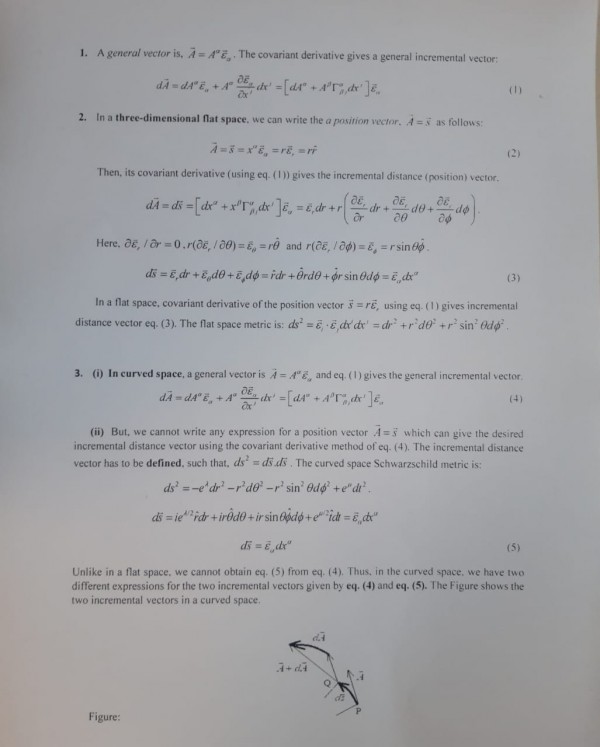Kindly refer to the earlier question: Why in the curved space-time, the double derivatives of the position vector are symmetric but any other vector are not symmetric?
This problem can be mathematically analysed as follows:
The symmetry conditions seem to depend upon, how we define the vectors and their incremental vectors. We compare incremental vectors in a flat space and curved space:
(a) In a flat space, an incremental vector of a general vector (eq. (1) in image) can be obtained by taking a covariant derivative of the vector. Similarly, an incremental distance (position) vector (eq. (3)) can also be written by taking covariant derivative of the position vector.
Therefore, the expressions of both the general incremental vector and the incremental distance vector satisfy same symmetry conditions in a flat space.
(b) In a curved space, an incremental vector of a general vector (eq. (4) in image) can be obtained by taking a covariant derivative of the vector.
But, there is no expression of position vector which can be differentiated to write the desired incremental distance vector. The incremental distance vector has to be defined based on the Schwarzschild metric (eq. (5) in image).
In a curved space, the expressions for the incremental distance vector (eq. (5)) and any other general incremental vector (eq. (4)) are not similar.
Hence, the symmetry conditions for their corresponding vectors, general vector A and position vector s need not be same. Note, writing a position vector expression in curved space is not necessary for suggesting that the double derivatives of the position vector are symmetric. This symmetry arises because we can take partial derivative of the incremental distance (position) vector. This symmetry leads to the symmetry of Christoffel symbols.
But assumption of this symmetry of position vector cannot guarantee symmetry of double derivatives of a general vector. Therefore, some curvature tensor components are non-zero.
Reference Article:
https://www.researchgate.net/publication/350546500_A_classical_scrutiny_of_the_Schwarzschild_solution

 Q&A (4908)
Q&A (4908) Reviews (205)
Reviews (205) Meta (440)
Meta (440) Q&A (4908)
Q&A (4908) Reviews (205)
Reviews (205) Meta (440)
Meta (440)